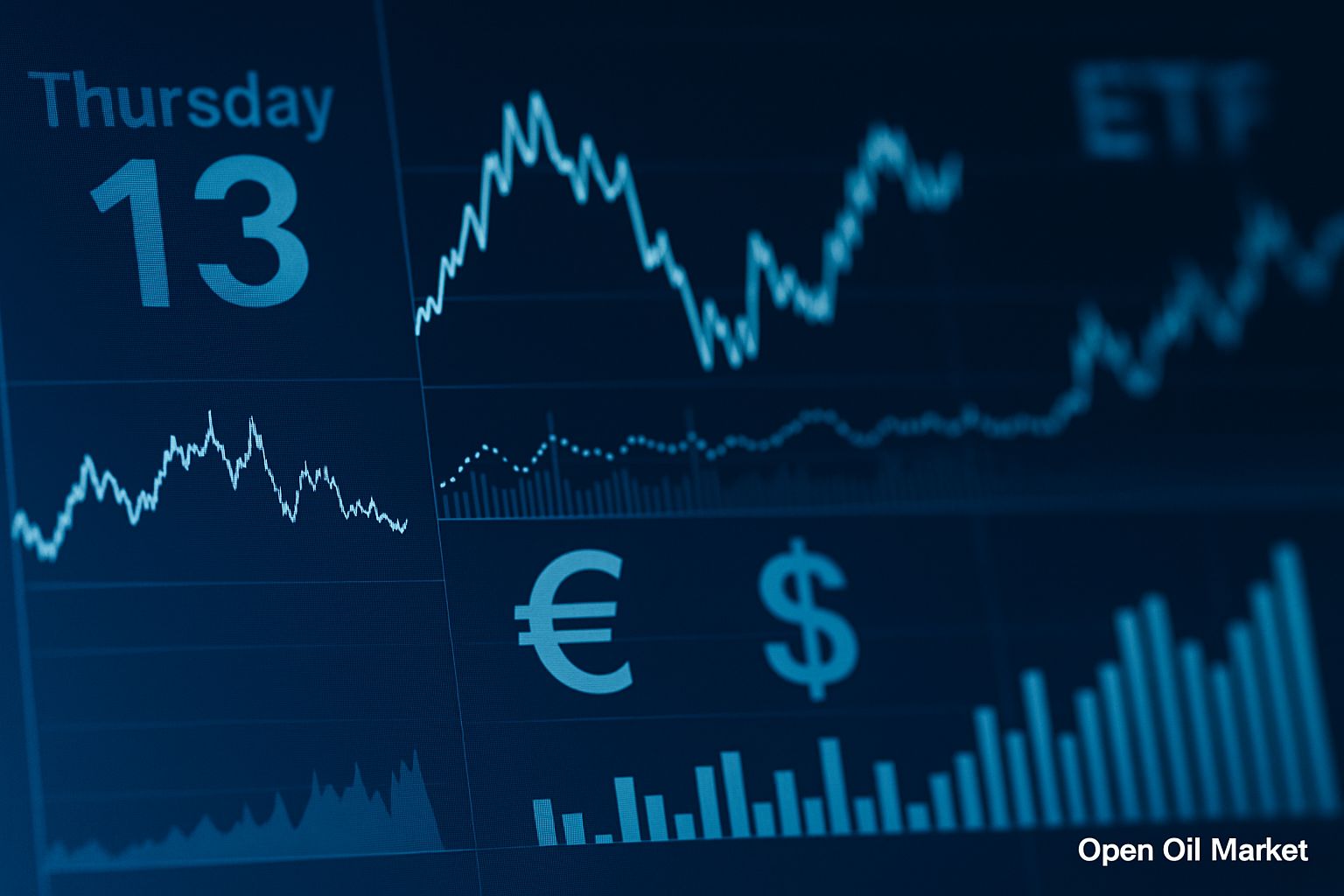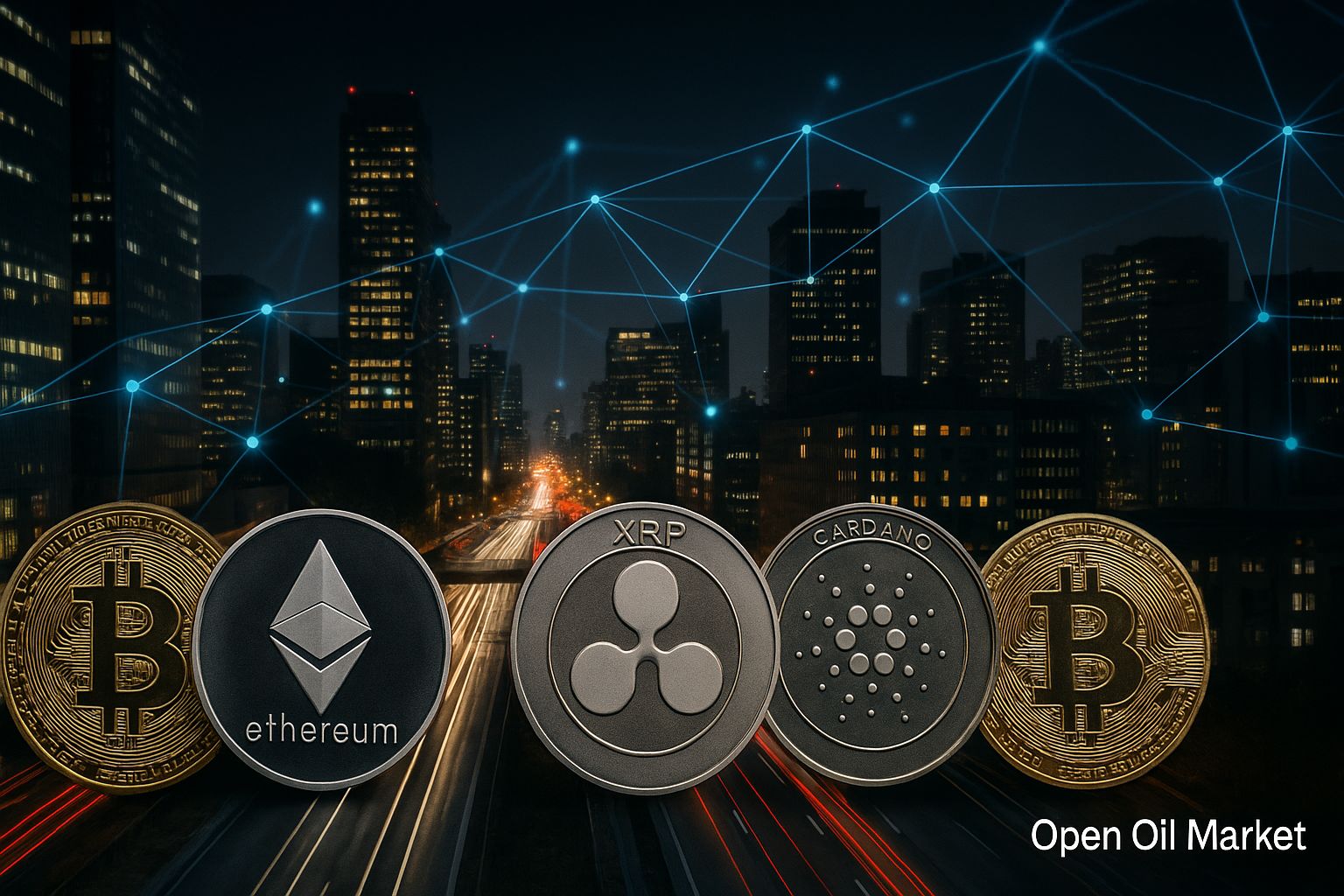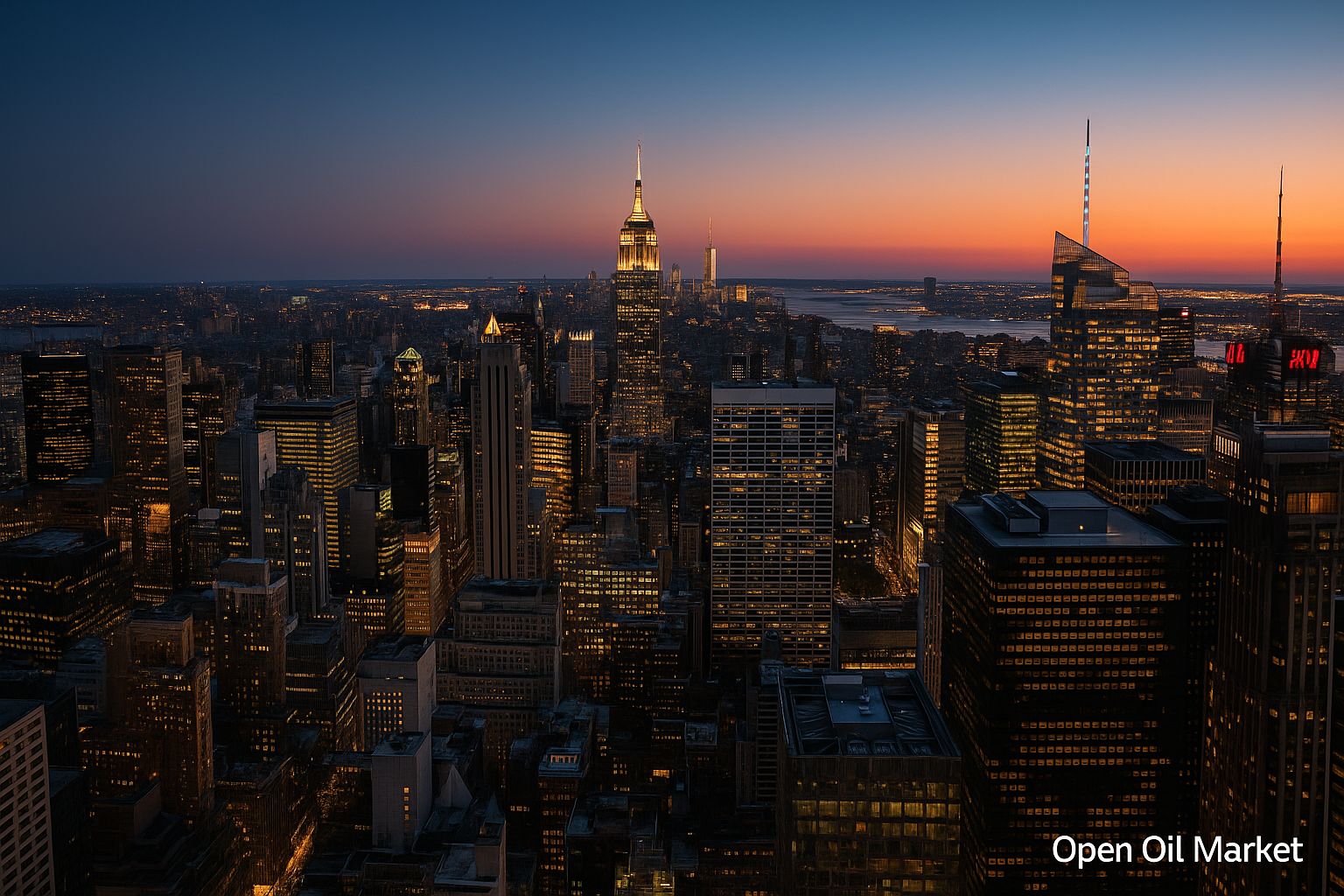
Global Overview of Venture Investments and Startups as of 23 October 2025: Mega Rounds in AI, Defence Technology Boom, Return of Mega Funds, and Revival of the IPO Market.
By the end of October 2025, the global venture market is demonstrating a robust upturn following several years of decline. Investors worldwide are once again actively financing technology startups—record deals are being made, and companies' plans to go public (IPO) are again capturing attention. Major players are returning to the arena with large-scale investments, while governments across various countries are ramping up support for innovation. As a result, private capital is flowing back into the startup ecosystem, providing resources for a new wave of growth. According to industry analysts, in the third quarter of 2025, the total volume of venture investments worldwide rose by nearly 40% year-on-year—a clear indication of the resurgent risk appetite.
Growth in venture activity is being observed in all regions. The USA continues to lead (especially in the artificial intelligence segment), with investment volumes in startups in the Middle East doubling compared to last year, while Germany has, for the first time, outpaced the UK in the number of venture deals in Europe. In Asia, relative declines persist in China amid regulatory uncertainty, while India, Southeast Asia, and Gulf countries are attracting record amounts of capital. The investment boom is reaching new frontiers: amid general growth, nascent tech hubs are forming in Africa and Latin America (for instance, a recent major investment of around $100 million in the electric mobility sector was made in Africa). Startup ecosystems in Russia and the CIS are also striving to keep pace, despite external constraints. A global venture boom is emerging in the early stages, although investors are still acting selectively and cautiously.
Below are the key events and trends shaping the venture market agenda as of 23 October 2025:
- Return of Mega Funds and Large Investors. Leading venture funds are attracting unprecedented amounts of capital and sharply increasing investments, flooding the market with liquidity and enhancing the appetite for risk.
- Record Rounds in AI and a New Wave of “Unicorns.” Unprecedented investments inflate startup valuations to unseen heights, particularly in the artificial intelligence segment.
- Revival of the IPO Market. Successful listings of technology companies and new applications for public offerings confirm that the long-awaited “window” for exits has reopened.
- Boom in Defence Technology Investments. The geopolitical climate is stimulating increased interest in startups related to defence and security, which are becoming a focal point of the venture agenda.
- Diversification of Sector Focus. Venture capital is flowing not only into AI but also into fintech, climate projects, biotechnology, defence developments, and even crypto startups.
- Wave of Consolidation and M&A Deals. New mergers, acquisitions, and strategic investments are reshaping the industry landscape, creating opportunities for exits and accelerated growth for companies.
- Local Focus: Russia and the CIS. Despite constraints, new funds and initiatives aimed at developing local startup ecosystems are emerging in the region, attracting investor attention.
Return of Mega Funds: Big Money Back in the Market
The largest investment players are triumphantly returning to the venture stage, marking a new surge in risk appetite. For example, the American firm Andreessen Horowitz has announced the formation of a new mega fund amounting to approximately $20 billion for investments in promising AI startups, while the Japanese conglomerate SoftBank is launching Vision Fund III, sized at around $40 billion, targeting cutting-edge technologies. Sovereign funds from Gulf countries have also sharply increased their activity: they are pouring billions into technology projects and initiating state mega-programmes, creating their own tech hubs in the Middle East. Simultaneously, dozens of new venture funds are emerging globally, attracting significant institutional capital for investments in high-tech sectors.
The return of such “big money” from renowned Silicon Valley funds and global investors not only intensifies competition for the best deals but also instills confidence in the industry regarding further capital inflows. The American venture sector is sitting on record reserves of uninvested capital (“dry powder”)—hundreds of billions of dollars are ready to be deployed as new opportunities arise. The influx of large funds saturates the market with liquidity, providing resources for large funding rounds and supporting the growth of promising companies’ valuations.
Record Investments in AI and a New Wave of “Unicorns”
The field of artificial intelligence is the primary driver of the current venture upsurge, exhibiting unprecedented funding levels. Investors worldwide are keen to establish positions in AI sector leaders, directing colossal resources into the most promising projects. For instance, the xAI project (founded by Elon Musk) has attracted around $10 billion in total, while AI model developer OpenAI has raised funding in the region of $8-9 billion, with a valuation of approximately $300 billion. Rumours are circulating that one company building infrastructure for AI is negotiating a multi-billion dollar round at an extraordinarily high valuation. This investment frenzy has spawned a host of new “unicorns”—startups valued at over $1 billion.
The powerful influx of capital is rapidly inflating the valuations of young AI companies. AI startups are now achieving “unicorn” status at a record pace, particularly in the generative AI segments and supporting infrastructure. Experts estimate that in 2025, the total volume of venture investments in AI startups will exceed $200 billion—accounting for about half of the overall global venture financing market. In developed countries, around 70% of all venture funds are currently concentrated in mega rounds (of $100+ million), reflecting a trend towards larger deals. While some analysts caution about the risk of overheating at early stages (when any project tagged with AI receives inflated valuations), the fear of missing out on the next technological revolution continues to fuel the capital inflow. The appetite for AI projects among investors remains high, and the field of artificial intelligence is experiencing an unprecedented boom.
The IPO Market Awakens: A Window of Opportunity for Exits
The global market for initial public offerings of startups is emerging from dormancy and gaining momentum. In recent months, several noteworthy venture firms have successfully conducted IPOs, receiving high valuations on the stock market. Investors are eager to acquire shares in technology newcomers once again, as evidenced by impressive debuts: for instance, design software developer Figma and fintech giant Circle successfully entered the public market with substantial success—their capitalisation soared in the initial days of trading. Throughout 2025, the total number of technology IPOs has significantly increased compared to the previous year, with more than a dozen “unicorn” startups going public on the global market in just the third quarter, boasting a combined capitalisation exceeding $90 billion at the time of listing.
Venture investors perceive these signals as confirmation that the long-anticipated “liquidity window” for exits has indeed reopened. Many companies that postponed their market debut during the downturn of 2022-2023 are now renewing their IPO plans and submitting applications to regulators. Among the anticipated major debuts is the Swedish fintech unicorn Klarna, preparing to go public with an estimated valuation of around $14 billion, as well as American payment company Stripe, which the market expects to debut with one of the largest valuations among private tech firms. The success of these new listings not only allows founders and funds to realise profits but also restores confidence that the venture cycle can once again culminate in planned exits. The window of opportunity for investment exits has swung open once more, facilitating the flow of capital into the next generation of startups.
Defence Technology Boom: A New Priority for the Venture Market
Amid geopolitical tensions, the niche of defence and military technologies is booming. Venture investors are increasingly financing startups associated with defence, security, and aerospace. In Europe, investment in defence startups has multiplied since early 2022; only in the first months of 2025 did companies in this sector attract around €1.4 billion, which is significantly greater than in previous periods. The heightened interest is fuelled by government contracts and the search for innovative solutions for the military—from unmanned drones to biotechnological sensors. American funds are also getting involved: new players targeting military technologies have emerged in the USA, and some major corporations (e.g., defence contractors) are launching their own venture divisions to scout promising developments.
The rapid capital inflow into the defence-tech sector is establishing a new priority in the venture market. Startups that once remained on the peripheries of interest (military AI systems, robotics for the army, cybersecurity, etc.) are now moving to the forefront. While some analysts caution that the excitement surrounding defence technologies may peak, investors remain eager to actively invest in this area, given the high demand from government clients and the relevance of the developments. The boom in defence startups illustrates how swiftly venture capital adapts to new global challenges, redirecting focus to areas promising significant growth in demand.
Diversification of Investments: Not Just AI
In 2025, venture investments are covering an increasingly broader range of sectors and are no longer solely concentrated on artificial intelligence. Following the slowdown of the previous year, funding is resuming in other segments of the technology market, making the current upturn more balanced. Funds are keen to diversify their portfolios, allocating capital to promising projects across various fields. Key directions attracting investor interest include:
- Fintech: new fintech services and digital banks continue to receive substantial investments amid robust demand for online services. Global investments in the fintech sector are once again in the tens of billions of dollars, showcasing a “second wind” for the industry following the downturn of 2022-2023.
- Climate and “Green” Projects: solutions in clean energy, emissions reduction, and eco-technologies are attracting venture capital attention due to the prioritisation of sustainability (ESG). For instance, a coalition of private venture firms led by Bill Gates’ Breakthrough Energy Ventures has formed a new fund of around $300 million to finance climate startups and plans to make its first investments very soon.
- Biotechnology and Health: investments in the development of new drugs, genetic research, life-extension technologies, and medical devices remain high. Pharmaceutical giants and specialised funds are actively investing in biomedical and healthtech startups, anticipating breakthrough products and the enormous potential of the health market. For example, Finnish manufacturer Oura, known for its smart rings, raised around $900 million with an $11 billion valuation, demonstrating investor interest in health wearables.
- Cryptocurrencies and Blockchain: after a decline in interest in recent years, crypto startups are once again on the radar of venture investors. The stabilisation of the digital assets market and progress in regulation have heightened confidence in new projects in decentralised finance, blockchain infrastructure, and Web3.
Thus, venture capital is now being directed toward a diverse range of sectors—from finance and energy to medicine and crypto technologies. This strategy of broadening sector focus aims to mitigate the risks of overheating in a specific segment (such as AI) and ensure more sustainable development for the entire startup ecosystem.
Consolidation and M&A Deals: Expanding Players
High valuations of startups and fierce competition for new markets are pushing the industry towards consolidation. A wave of large mergers and acquisitions is once again coming to the forefront, altering the balance of power in the technology sector. In the third quarter of 2025, many significant M&A deals took place, including the acquisition of several “unicorns” by strategic investors. Major corporations seeking to acquire promising innovations, as well as successful startups themselves, are playing a role in this consolidation by merging to strengthen their market positions.
Leading technology companies are actively purchasing innovative startups to expand their product lines and outpace competitors. For example, AI market leaders are acquiring small AI companies to enhance their technologies; in fintech, banks and payment systems are buying young services to integrate new features; while in biotech, pharmaceutical conglomerates are acquiring developers of promising drugs. This consolidation reshapes the industry landscape, enlarging key players and allowing the most successful projects to scale faster under larger partners’ wings. For venture funds, the M&A wave signifies additional exit avenues: strategic deals are increasingly becoming an alternative to IPOs, providing investors with the long-awaited profits. Although the overall volume of acquisitions may fluctuate quarterly, the trend towards business expansion is evident—mergers and acquisitions have once again become an integral part of growth strategy in the technology sector.
Russia and the CIS: Local Initiatives Amid Global Trends
In Russia and neighbouring countries, despite external constraints, venture activity is also witnessing a revival. According to industry research, the volume of venture investment in the Russian Federation nearly doubled in the first half of 2025 compared to the same period last year (although the initial figures are still modest), reaching approximately $78 million. Meanwhile, the total number of deals has decreased, indicating a new trend: money is becoming more abundant while projects are fewer. In other words, investors are only betting on the strongest teams. The average round size has increased, and requirements for startups have tightened: getting selected has become more challenging, but those projects that manage to earn trust attract significantly larger capital.
New funds and programmes aimed at supporting technology companies are being launched in the region. Government institutions and large corporations are increasingly engaging in the development of the local startup scene: industry accelerators, regional venture funds (for example, the Moscow fund for AI development or corporate funds associated with state-owned companies), and innovation clusters are being created. These initiatives aim to compensate for the outflow of foreign capital and integrate local projects into the stream of global trends. Despite sanctions barriers, the Russian and CIS ecosystems are striving to follow global trends—from artificial intelligence to new industrial technologies. Gradually, the local venture market is restoring its credibility: investors are showing cautious interest in competitive startups within the country and are gearing up to fund their growth.
Cautious Optimism and Sustainable Growth
By the end of autumn 2025, moderately optimistic sentiments have taken root in the venture industry. Successful IPOs and major deals indicate that the downturn period is behind us, although investors still prefer to act selectively and focus on projects with sustainable business models. Significant capital inflows into the sectors of AI, fintech, defence technologies, and others instil confidence in future growth; however, funds are increasingly scrutinising risks to avoid market overheating. The industry is entering a new phase of development, emphasising qualitative, balanced growth. Market participants are cautiously optimistic: there is an understanding that the upcoming wave of innovations could yield substantial results, provided a reasonable balance is maintained between ambitious investments and disciplined risk assessment.




